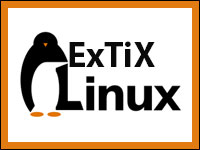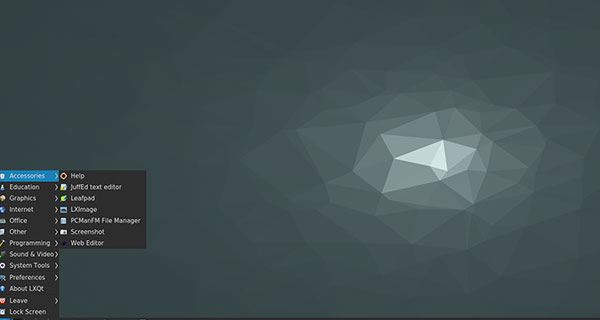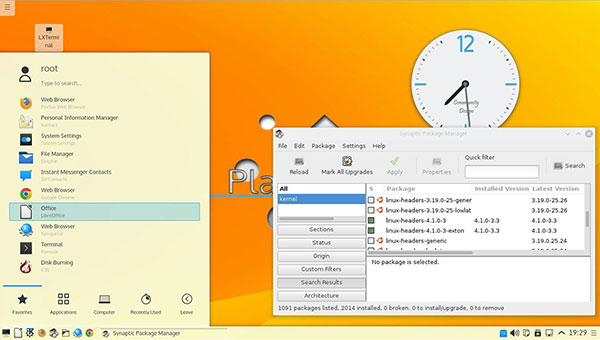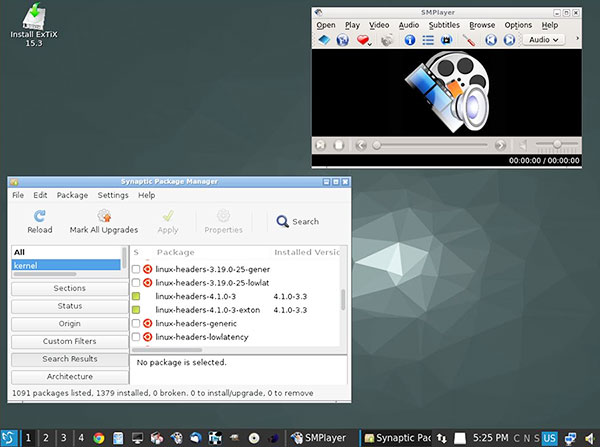
![]()
The latest release of ExTiX offers a new spin on an old desktop environment and exhibits a passion for speed and ease of use.ExTiX 15.3, a fusion of the LXDE and Razor-qt desktop environments, has the economy of working in the LXQt desktop environment.
LXQt is lightweight, modular, very fast and user-friendly. It is based on the popular LXDE — that is, Lightweight X11 Desktop Environment.
I tried several early releases of LXQt on other distros and was pleased with their performance. LXQt proved to be a stable desktop environment usable on production desktop machines.

I downloaded the first ExTiX release with LXQt and found much more control over what I knew from my days of using the LXDE environment. The Qt Configuration Tools are integrated within the LXQt Settings Panel.
Meshing traditional LXDE functionality with the added tweaks from Razor-qt is a big step in a better direction for this lightweight desktop environment. If you want eye-popping visual displays, you won’t find them in either LXQt or Xfce, another very accomplished lightweight desktop environment.
ExTiX 15.03 KDE offers a much heavier desktop environment with an ample supply of eye candy. Both versions became available last month.

Screen Saver, Literally
I favored the lighter option because the several-year-old box I prepped for its installation has a subpar Nvidia integrated video card. It has no driver support available for most anything else I installed on it. Not so with ExTiX 15.03 running LXQt.
As an example of how banal this cheap gear is, it failed to qualify for a free upgrade to Windows 10 because of the graphics issue. It barely ran Windows 7 and gagged on Windows 8. Other than Puppy Linux and the Chromixium distro, even the lightweight Linux environments I installed on it barely ran.
The driver issue is one of the reasons developer Arne Exton swapped out Gnome 3.14 with LXQt in his latest release. Gnome 3.14 does not work with Nvidia’s proprietary drivers. The Nvidia graphics driver 352.30 automatically runs on any of the supported cards.
Exton installed the Nvidia graphics driver 352.30 in the LXQt version. It has support for the following GPUs: Quadro K1200, Quadro M6000, GeForce 920M, GeForce 930A, GeForce 930M, GeForce 940M, GeForce GTX 950M, GeForce GTX 960M and GeForce GTX TITAN X. That explains why ExTiX works so well on the box that Windows rejected — it has a GeForce 930M card installed.
Under the Hood
ExTiX LXQt is based on Ubuntu 15.04 Vivid Vervet. LXQt 0.9.0 is not in Ubuntu’s repositories. All packages have been updated to the latest version.
ExTiX LXQt runs a special type of Linux Kernel 4.1.3, version 4.1.0-3-exton. By comparison, Ubuntu 15.04 released on April 5 uses kernel 3.19.0-16-generic.
One of the best features in ExTiX is its inclusion of all multimedia codecs. This distro needs no extra downloads of special software or drivers — it just works.
Software Supply
Google Chrome is the stock Web browser. With Chrome, it’s possible to watch Netflix movies, which is not the case with Firefox on Linux.
Any Google infrastructure junkie will appreciate not having to install the Chrome browser. Just sign in to your Google account and all your settings appear.
A Web editor is not usually a must-have application, but I use it often, so I appreciated not having to grab one. I was pleased to be introduced to BlueGriffon, a new WYSIWYG content editor for the World Wide Web. Powered by Gecko, the rendering engine of Firefox, it is a modern and robust solution to edit Web pages that follow the latest Web standards.
Other typical Linux favorites, including LibreOffice, Thunderbird, GParted, Brasero and SMPlayer, come preinstalled.
Package Deal
ExTiX does not have its own repository, nor does it tap into the Ubuntu Software Center like other Ubuntu-based Linux distros. Instead, ExTiX uses the Synaptic Package Manager to maintain system files and add or remove software. This is not a bad point at all. If anything, it frees you from worrying about in-house support lagging behind.
ExTiX includes several other compilation tools so you can install packages from source. This is a convenience for seasoned Linux users.
You do not really have to install anything from source unless you stray onto nonstandard open source packages. The preinstalled software gives typical users everything they need for a solid out-of-the-box experience.

Installation Nirvana
Linux distros generally fall into one of two installation categories. Either they have a well-tooled automated installation routine that requires little or no technical skills, or they don’t. ExTiX definitely falls into the first category.
Almost all you really need to know, even to load the live session DVD, is to use “extix” for the username and just hit the enter key for the password. Of course, you also have to know about using a media program that burns a self-booting DVD from the downloaded ISO file. You can do that from any Linux system or from within Windows.
The ExTiX ISO is a hybrid. You can copy it to a USB drive and boot to ExTiX without installing the OS to the hard drive. The process includes persistence, so you can save all your system changes and data to the USB stick. The developer included two scripts to make the installation to USB very simple.
You can run ExTiX from RAM by selecting alternative 3 for the boot option. After the system boots, you can remove the DVD or USB stick. To run ExTiX that way, you need at least 2 GB RAM.
To install ExTiX to a hard drive, start the install program Ubiquity from the menu. Then follow the instructions or click on the desktop icon Install ExTiX 15.3.
Lovin’ LXQt
The additional tweaking that the QT settings panel brings to LXDE seems to close the gap considerably between traditional LXDE and Xfce.
The only real visible differences between the old LXDE and the new LXQt desktop are in the settings and controls. There are numerous control options. Plus, you can launch many of the settings individually from other menu lists. You can find most of them in the Configuration Center in the Preferences menu.
The Configuration Center provides access to some dozen icons to configure functions such as Appearance, Desktop Notifications, Keyboard and Mouse, Openbox Settings and more advanced System Settings choices. You also can access the QT Configuration panel by clicking on that icon.
Bottom Line
Meshing traditional LXDE functionality with the added tweaks from Razor-qt is a big step in a better direction for this lightweight desktop environment. The addition of LXQt in ExTiX 15.03 is a very good option, especially for challenged hardware. It brings new features to a reliable and efficient Linux OS staple.
ExTiX 15.03 is an excellent OS for a seasoned Linux user or a newcomer. It is loaded with all the software typical users will need. Adding more software is a two-click process. The user interface is easy and pleasant to use.
Want to Suggest a Review?
Is there a Linux software application or distro you’d like to suggest for review? Something you love or would like to get to know?
Please email your ideas to me, and I’ll consider them for a future Linux Picks and Pans column.




















































